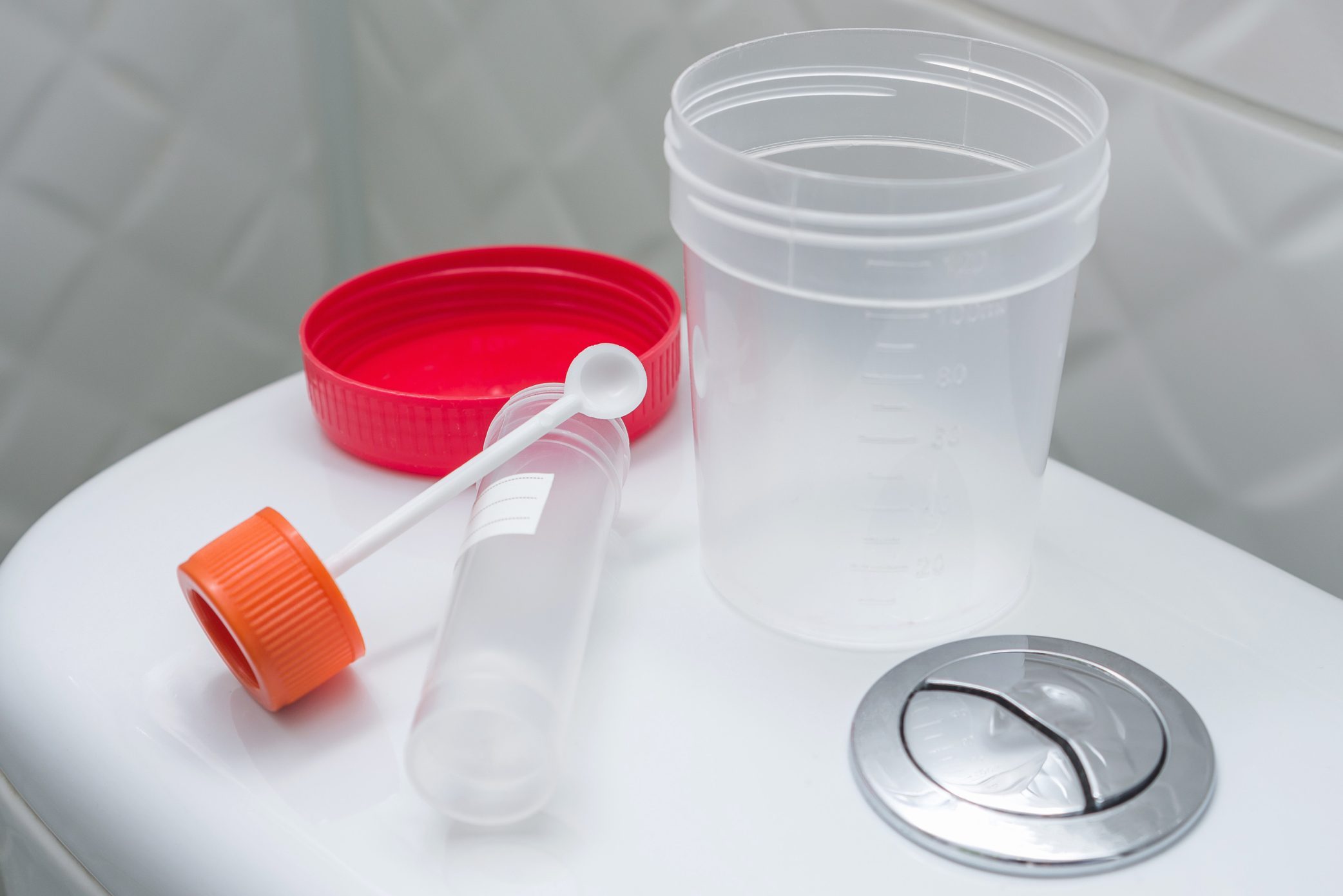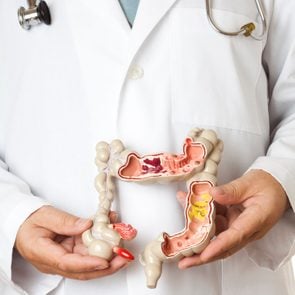At-Home Colon Cancer Tests: What Do Doctors Think?
Updated: Feb. 01, 2023
At-home colon cancer tests are gaining popularity, but their accuracy in detecting cancers and polyps can vary.
An at-home colon cancer test
Colorectal cancer screening can save lives—but only two-thirds of adults aged 50 and over opt to get one. That rate may drop even further when you factor in the Covid-19 pandemic.
One study of electronic health records from 60 health care organizations, published in Epic Health Network Research, found a 64 percent drop in colonoscopies from mid-March 2020 to mid-June 2020 compared with non-pandemic levels.
All of this has accelerated the interest in at-home tests and not just from patients. Some health care providers, like Kaiser Permanente, are mailing colon cancer testing kits to members.
Here’s everything you need to know about at-home colorectal cancer screening and how it measures up compared to a colonoscopy.
Colorectal cancer and colonoscopies
Colorectal cancer is the second leading cause of death from cancer among adults in the United States, yet it is a preventable disease. Not only can a colonoscopy detect cancer, but it can also find precancerous polyps, allowing a doctor to remove them on the spot.
“Colonoscopy is the ‘gold standard’ not only for detecting colorectal cancer, but for preventing it from forming in the first place,” says David Robbins, MD, associate chief and program director of the division of gastroenterology at Lenox Hill Hospital in New York City.
The procedure itself is pretty painless. It involves snaking a long, flexible tube with a camera on the end into your rectum and up through your colon to hunt for problems. Thankfully, all this happens while you’re sedated.
The 24 hours beforehand, though, can be unpleasant. You need to completely (and we do mean completely) empty your bowels with a cocktail of liquids: a special and not necessarily tasty bowel preparation and laxatives. Hence the increasing popularity of at-home tests which don’t require this kind of preparation. There has even been an increase in other types of at-home tests as well, including an at-home gut health test.
Colon cancer screening recommendations
For years, the U.S. Preventive Services Task Force (USPSTF) stated that all average-risk adults should start colorectal cancer screening starting at age 50. But in response to a rising case rate mostly in younger adults, it recently issued a draft screening recommendation lowering the age to 45.
This could be with a colonoscopy but also tests performed by doctors such as computed tomography (CT) colonography which uses high-tech X-rays and computer programs instead of an inserted tube. It could also be a flexible sigmoidoscopy which looks at the rectum and lower colon with the tube. Or it could be with highly sensitive stool tests.
Insurance companies usually base their coverage policies on Task Force recommendations.
The American Cancer Society had already lowered its age recommendation to 45 for average-risk individuals. It recommends the screening be done with either a stool-based test or a visual exam, such as a colonoscopy. It’s important to remember that screening tests are done for people with no symptoms.

Types of at-home colon cancer tests
At-home screening tests have been around in one form or another for more than 20 years, says Dr. Robbins. Three Food and Drug Administration-approved tests are now on the market.
“All three look for microscopic or invisible traces of blood in a stool sample,” explains Dr. Robbins. The three tests are:
- The Fecal Immunochemical Test (FIT or iFOBT) uses antibodies to detect hemoglobin, a protein in your blood. It’s done once a year and requires you to send in a small amount of feces to a lab. Kaiser Permanente recommends that certain patients use this test starting at age 50.
- The Guaiac FOBT (gFOBT) detects hemoglobin with a chemical called guaiac and is also done once a year with a small sample of feces.
- The Multitarget stool DNA test (FIT-DNA) looks for small amounts of blood plus DNA from cancer cells. This test, known as Cologuard, is repeated every three years. It requires you to collect and send in an entire bowel movement.
The availability of these tests has improved screening rates, according to a 2018 JAMA Internal Medicine meta-analysis. However, if you do have an abnormal test, you should still get a colonoscopy to determine if you have cancer or something more benign like an ulcer or hemorrhoids.
You may need a prescription for some of these and, in fact, it’s much better to get screened, even at home, in partnership with a doctor.
How accurate are they?
None of the three at-home tests are as accurate as a colonoscopy. Doctors and researchers often cite an older study that found colonoscopies to have an accuracy rate of about 94 percent.
The newest test, Cologuard, “is the most accurate of the bunch and is gaining traction among primary care providers,” says Dr. Robbins.
A New England Journal of Medicine comparison from 2014 found that Cologuard detected 92.3 percent of colorectal cancers and 42 percent of large polyps while FIT detected only 74 percent of cancers and 24 percent of polyps. That study, however, was funded by the company that makes Cologuard.
The gFOBT test is even less accurate: finding between 20 percent and 50 percent of cancers. The at-home tests in general tend to have a higher rate of false positives, meaning they tag something as cancer when it actually isn’t.
Cologuard has more false positives than other at-home tests, says Craig Reickert, MD, division head of Colon and Rectal Surgery at Henry Ford Cancer Institute in Detroit.
Pros and cons of at-home colon cancer tests
One of the biggest advantages of at-home screening is that you get to skip the nasty work ahead of time.
“There is not much prep work,” says Dr. Reickert, adding that the tests are also covered by insurance and fairly easy to do. If you’re paying out of pocket, the most expensive, at $500, is Cologuard.
If the results come back positive and you need a diagnostic colonoscopy (as opposed to a screening one), there could be different copays and deductibles, he points out. (Here are some colonoscopy prep tips from a doctor.)
The biggest downside is in the area of prevention. “None of the at-home tests do a good job of detecting polyps, the growths that can turn into cancer,” says Dr. Robbins. Colonoscopies not only find polyps, even small ones, but doctors can also remove them right away.
Is there a place for at-home tests?
For certain groups, yes.
“These tests are only helpful for people at average risk for colon cancer who are not on blood thinners (other than aspirin),” says Dr. Reickert.
“If you have a personal or family history of colon polyps or colon cancer, personal history of IBD [inflammatory bowel disease], or are taking medications like Coumadin, Eliquis, Xarelto and the like, the tests are not indicated because they can be unreliable and colonoscopy is the preferred test.”
The bottom line
If you’re having symptoms like bleeding or a change in bowel habits, you should get a colonoscopy and not a stool test, says Dr. Reickert. But if you’re at average risk with no other red flags, talk to your doctor about whether an at-home test is a fit for you.
“There is no one-size-fits-all recommendation,” adds Dr. Robbins. “I advise patients to talk with their doctor about the ‘menu’ and decide together what’s best—the best is the one that gets done.”
Next, learn about these silent signs of colon cancer.

















